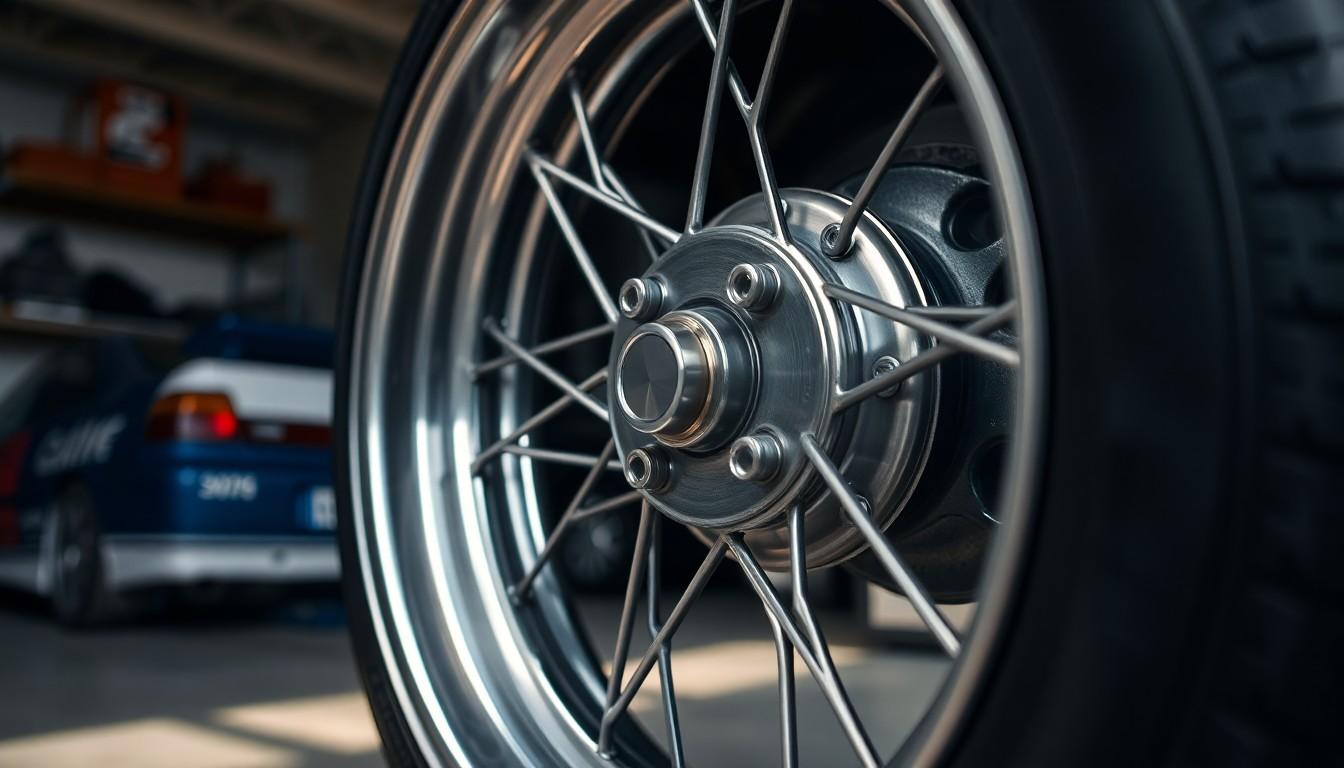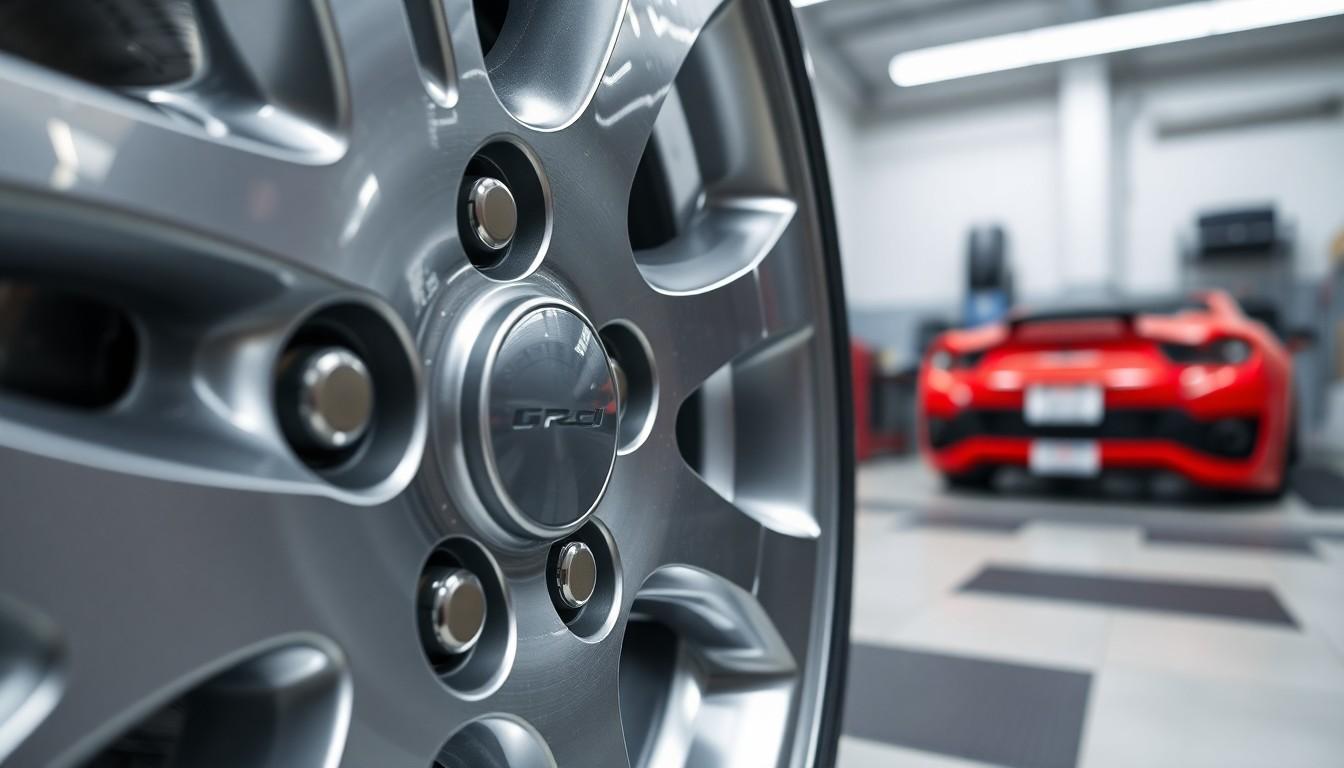Ever noticed that shiny metal circle at the center of your car’s tire? It’s not just for looks—it’s an essential component that keeps you rolling safely on the road. But what exactly is this metal part called, and why should you care about it?
We’ll demystify this crucial tire component in today’s guide. Whether you’re a car enthusiast or simply want to understand your vehicle better, knowing about this metal part can help you make informed decisions about tire maintenance and replacement. Plus, it’ll give you confidence when talking to mechanics so you’ll never feel out of your depth during your next service appointment.
Understanding Tire Construction and Components
A typical tire consists of several interconnected parts that work together to provide traction, support, and durability. The metal component that many people notice is just one element of a complex structure designed for safety and performance.
The Basic Tire Structure
Tires feature multiple layers of materials carefully engineered for exact functions. The outer rubber tread contacts the road surface, providing grip in various conditions. Beneath this visible layer, steel belts reinforce the tire and maintain its shape under pressure. The sidewall protects the internal components while displaying important information like tire size and pressure ratings. Inside the tire, an inner liner acts as an air seal, preventing leakage and maintaining proper inflation.
Identifying the Metal Components
The primary metal component in a tire assembly is the wheel, often incorrectly called a rim. This central metal structure provides mounting points for the tire’s bead and connects to the vehicle’s axle. Modern wheels typically contain aluminum alloys or steel, offering different benefits for weight, strength, and appearance. The wheel’s outer edge features a flange designed to securely hold the tire in place. Additional metal components include the valve stem, which allows air to enter and exit the tire, and sometimes wheel weights attached to ensure proper balance.
How Tire and Metal Components Work Together
The relationship between the tire and its metal counterpart creates a functional system. The tire’s bead (a reinforced edge containing steel wire) sits firmly against the wheel flange, forming an airtight seal when properly inflated. This connection transfers forces between the road and vehicle while containing the air pressure necessary for load support. The wheel’s design includes exact dimensions that must match the tire specifications for proper fitment and performance. Improper matching of these components can lead to handling issues, premature wear, or catastrophic failure during operation.
The Metal Part of a Tire: The Wheel Rim Explained

The metal part that directly interacts with the tire is called the rim. This critical component serves as the outer edge of the wheel and provides the mounting surface where the tire securely attaches.
Anatomy of a Wheel Rim
Wheel rims feature a distinctive U-shaped design with a deeper center than edges to properly support the tire bead. The outer circular structure creates exact mounting points that ensure the tire remains firmly in place during vehicle operation. Each rim includes a valve stem hole that allows for tire inflation and pressure monitoring—an essential feature for maintaining proper tire performance. The rim’s precise engineering creates a secure seal with the tire bead, preventing air leakage while allowing for controlled mounting and dismounting when necessary.
Materials Used in Wheel Rim Construction
Rims are primarily manufactured from metal or alloy materials, typically matching the composition of the entire wheel structure. Some premium rims incorporate Teflon coverings for enhanced protection against road debris and corrosion. The production process for standard automotive steel wheel rims begins with rectangular sheet metal that’s bent into a cylindrical sleeve. Manufacturers weld the sleeve’s free edges together before applying cylindrical flow spinning techniques to achieve optimal thickness and angle specifications. The rim then undergoes precise shaping and calibration to meet strict safety and performance standards. Assembly involves connecting the rim to a stamped metal disc plate (containing holes for the center hub and lug nuts) through welding to form the complete wheel. Higher-end wheels might be cast or forged as single pieces for improved strength and reduced weight.
Distinguishing Between Wheels, Rims, and Hubs

Automotive terminology can be confusing, especially when it comes to the metal components that support your tires. Let’s clarify the differences between wheels, rims, and hubs to help you understand your vehicle better.
The Wheel Assembly Relationship
The wheel assembly functions as a complete unit consisting of multiple interconnected parts. At its core, the wheel includes the rim, hub, and other components like spokes and lug holes that work together to support the tire. The rim serves as the outer edge of the wheel and holds the tire securely in place with its characteristic U-shaped design. Meanwhile, the hub connects the entire wheel to the vehicle’s axle, ensuring proper rotation and stability during driving. This integrated relationship between components creates a sturdy foundation that supports the weight of your vehicle while providing the necessary connection to the drivetrain system.
Common Misunderstandings About Tire Terminology
Many drivers inadvertently use incorrect terms when discussing their vehicle’s components. The terms “rim” and “wheel” are frequently used interchangeably, but they represent different parts—the rim is just the outer portion of the wheel that contacts the tire, while the wheel is the complete metal assembly. Another common confusion involves distinguishing between tires and wheels—tires are the rubber casings that provide traction, while wheels are the metal structures that support them and connect to the vehicle. Hubcaps also create confusion as they’re removable covers designed to protect the wheel’s inner components and enhance appearance, not structural elements of the tire or wheel assembly. Understanding these distinctions helps in communicating effectively with mechanics and making informed decisions about vehicle maintenance.
Other Metal Components in Tire Construction

Tires contain several crucial metal elements that contribute to their structural integrity and performance capabilities. These metal components work together to create a safe, durable, and functional tire that can withstand the demands of daily driving.
Steel Belts and Their Function
Steel belts form essential layers within the tire’s construction, consisting of rubber-coated steel cords arranged in a radial pattern. These metallic reinforcements provide multiple performance benefits by increasing the stiffness across the tread area. Steel belts effectively minimize distortion of the ground contact patch, ensuring consistent traction during cornering and braking. They also offer enhanced puncture resistance, protecting against road hazards like nails and sharp debris. The added rigidity from steel belts contributes to improved fuel efficiency by reducing rolling resistance and maintaining optimal tire shape under load.
Bead Wire: The Hidden Metal Ring
Bead wire serves as the critical connection point between your tire and wheel rim, creating an airtight seal that maintains proper inflation. This component consists of high-tensile-strength steel wires bundled together and encased in hardened rubber compound. Bead wires are engineered to withstand tremendous forces, securing the tire firmly against the rim even under extreme driving conditions. The robust construction prevents air leakage while withstanding the stress of cornering, acceleration, and braking forces. Located at the innermost edge of the tire, these hidden metal rings aren’t visible once the tire is mounted, yet they’re fundamental to proper tire function and safety.
Importance of Quality Wheel Rims for Vehicle Safety

Quality wheel rims play a crucial role in overall vehicle safety and performance. The rim forms the critical connection point between your tires and vehicle, making its structural integrity essential for safe operation on the road.
Signs of Wheel Rim Damage
Identifying wheel rim damage early helps prevent dangerous driving situations. Visible cracks or dents on the rim indicate serious damage that can weaken its structure and potentially cause tire leaks or catastrophic blowouts. Bent or warped rims fail to hold tires properly, leading to uneven tire wear, vibrations while driving, and possible tire failure during operation. Corrosion and rust eating into the rim material compromise its structural integrity and ability to maintain an airtight seal with the tire. Loose lug nuts often signal that the rim isn’t properly secured to the hub, creating a dangerous situation where wheel separation could occur while driving. Strange vibrations, steering wheel shimmy, or unusual noises while driving frequently point to rim issues requiring immediate inspection.
Maintenance Tips for Wheel Rims
Regular inspection of wheel rims helps identify potential problems before they become safety hazards. Maintaining recommended tire pressure reduces stress on rims and prevents uneven tire wear that can affect rim performance. Avoiding potholes, curbs, and road hazards whenever possible protects rims from impact damage that might compromise their structural integrity. Cleaning rims regularly with mild detergent prevents buildup of brake dust and road grime that can accelerate corrosion. Proper torquing of lug nuts to manufacturer specifications ensures wheels remain securely attached to the vehicle. Professional balancing and alignment services help distribute weight evenly across all rims, extending their lifespan and improving vehicle handling. During seasonal tire changes, it’s worth having a technician inspect the rims for any signs of damage or wear that might not be visible to an untrained eye.
Conclusion
Understanding the metal components of your tires is essential for safe driving and effective vehicle maintenance. The rim forms the outer edge of the wheel assembly providing crucial support for your tires while steel belts and bead wire work behind the scenes to enhance durability and performance.
Regular inspection and proper maintenance of these metal components can prevent serious safety issues and extend the life of your tires. When you’re equipped with this knowledge you’ll communicate more effectively with mechanics and make better decisions about your vehicle’s care.
We hope this guide has clarified the often confusing terminology around wheels rims and tires. With this understanding you’ll approach tire maintenance with greater confidence ensuring a safer and smoother driving experience.
Frequently Asked Questions
What is the metal circle in the center of a car’s tire called?
The metal circle at the center of a car’s tire is commonly called the wheel, with the outer edge specifically referred to as the rim. The wheel is the complete assembly that provides mounting points for the tire and connects to the vehicle’s axle, while the rim is the outer portion that directly supports the tire bead and creates an airtight seal.
What is the difference between a wheel and a rim?
A wheel is the complete metal assembly that attaches to your vehicle’s axle, while the rim is specifically the outer edge of the wheel where the tire mounts. Think of the rim as a component of the wheel, not a separate part. Many people use these terms interchangeably, but understanding the distinction helps when discussing maintenance or purchasing new components.
What are steel belts in a tire?
Steel belts are rubber-coated steel cords arranged in a radial pattern within the tire structure. They increase tire stiffness, minimize distortion during driving, improve puncture resistance, and reduce rolling resistance for better fuel efficiency. These metal components are essential for modern tire performance and are typically found beneath the outer rubber tread.
What does the bead wire do in a tire?
The bead wire is a hidden metal ring at the tire’s innermost edge that creates an airtight seal between the tire and rim. This robust steel component ensures proper tire inflation, maintains stability under various driving conditions, and prevents the tire from separating from the rim during cornering or other stress situations.
How can I tell if my wheel rim is damaged?
Look for visible cracks, dents, corrosion, or bent sections on the rim. Pay attention to continuous tire pressure loss, vibration while driving, or visible tire bulges. Any of these signs could indicate rim damage that might lead to tire leaks or blowouts. Damaged rims should be inspected by a professional immediately for safety reasons.
How do I maintain my wheel rims?
Maintain your wheel rims by inspecting them regularly for damage, keeping proper tire pressure, avoiding potholes and road hazards, ensuring lug nuts are properly torqued, and cleaning them periodically to prevent corrosion. For alloy rims, use appropriate cleaners that won’t damage the finish. These simple practices extend rim lifespan and improve vehicle handling.
What materials are wheel rims made from?
Wheel rims are typically made from steel or aluminum alloys. Steel rims are durable and economical, making them common on standard vehicles. Aluminum alloy rims are lighter, offer better performance, and provide enhanced aesthetic options. Higher-end vehicles might feature specialized alloys like magnesium or carbon fiber composites for optimal weight reduction and strength.
What is a hubcap?
A hubcap is a decorative cover that attaches to the center of a wheel. Unlike rims, hubcaps serve no structural purpose—they’re purely cosmetic elements designed to improve appearance and protect lug nuts from dirt and moisture. Many modern vehicles use full wheel covers that extend beyond the hub to cover the entire wheel face.











